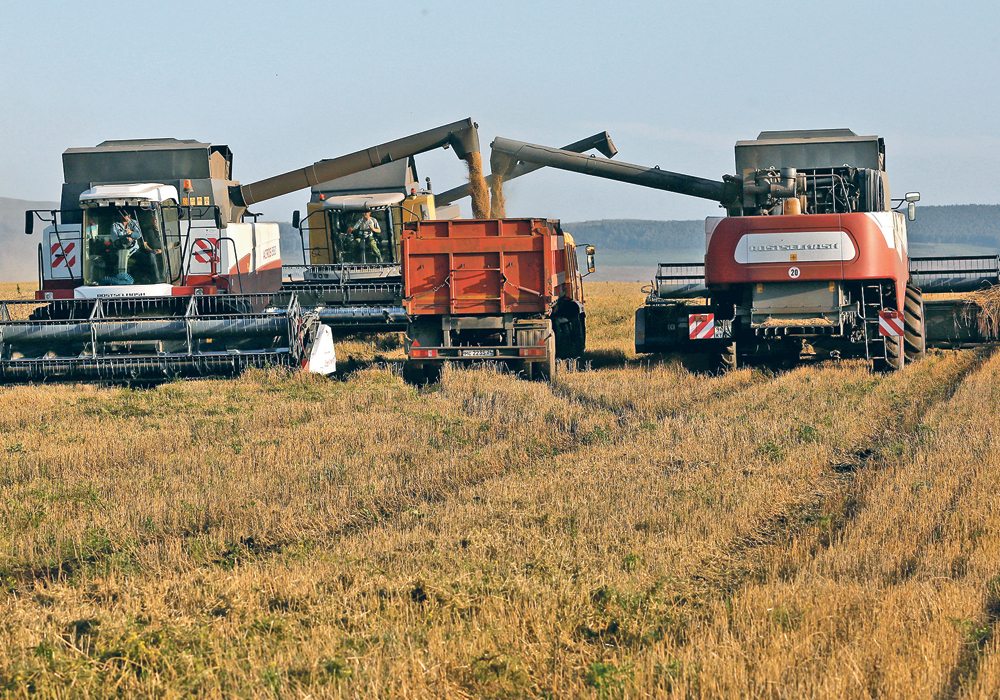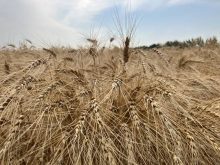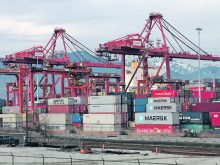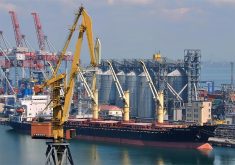LONDON, March 9 (Reuters) – Commodity prices eased on Wednesday after rallies to multi-year highs as markets digested supply disruption from Russia and Ukraine, major producers of energy, metals and crops.
Prices of commodities such as oil, wheat and grains have rocketed since Russia invaded Ukraine on Feb. 24, with sanctions causing many shippers to stop handling Russian material and a scramble for alternative supply.
Supply of many commodities was tight before the conflict began.
Read Also

Trump’s tariffs take their toll on U.S. producers
U.S. farmers say Trump’s tariffs have been devastating for growers in that country.
The United States has banned Russian oil imports, Britain said it would phase them out and the European Union published plans to cut its reliance on Russian gas by two thirds this year.
“Today’s falls are a sign that the market has coped with the situation, (and) is now calming down a bit,” said Danske Bank analyst Jens Pedersen.
The biggest chance of further rallies is in agricultural commodities, which have the least flexible supply, Pedersen said. Russia warned the West it was working on a broad response to sanctions.
Brent crude CLOc1 was down around 3 percent at $123.89 a barrel at around 1300 GMT, while U.S. West Texas Intermediate (WTI) CLc1 was down 3.5 percent at $119.14. O/R
Both are still up around 40 percent since Feb. 23 and have hit their highest since 2008.
Traders say the bans on Russian oil imports may not worsen shortages, and a potential source of extra oil supply is Iran.
Meanwhile, the International Energy Agency (IEA) said it could release more oil from stocks to ease fuel prices and would draw up an action plan to swiftly reduce oil usage.
Dutch TRNLTTFMc1 and British TRGBNBPD1 gas prices fell by nearly 20 percent, with Russian gas still flowing to Europe and traders taking profits. Prices had risen by as much as 300 percent since Feb. 23. NG/EU
Aluminium CMAL3 was up slightly but still down more than 10 percent from Monday’s record high, with traders uncertain about supply from Russia, which accounts for 6 percent of global output. MET/L
Nickel CMNI3 trading on the London Metal Exchange remained suspended after a short squeeze rocketed prices to records above $100,000 on Tuesday.
Palladium XPD= was down around 3 percent but still up roughly 25 percent since Feb. 23.
Gold XAU= fell around 1 percent, having on Tuesday come within a whisker of 2020’s record high. PREC/
Wheat Wv1 fell around 3.5 percent from a record high on Tuesday. Wheat is up around 25 percent since Feb. 23.
“There are now signs that demand is being slowed by high prices,” said Commerzbank analyst Carsten Fritsch in a note.
India has signed contracts to export about 500,000 tonnes of wheat in recent days, traders said. Ukraine banned exports of rye, barley, buckwheat, millet, sugar, salt, and meat until the end of this year.
Malaysian palm oil futures FCPOc3 raced to an all-time high of 7,268 ringgit (US$1,736.26) a tonne and soybean oil BOcv1 jumped to its highest in 14 years. Top producer Indonesia announced palm oil export curbs to shield local consumers from price rises.















